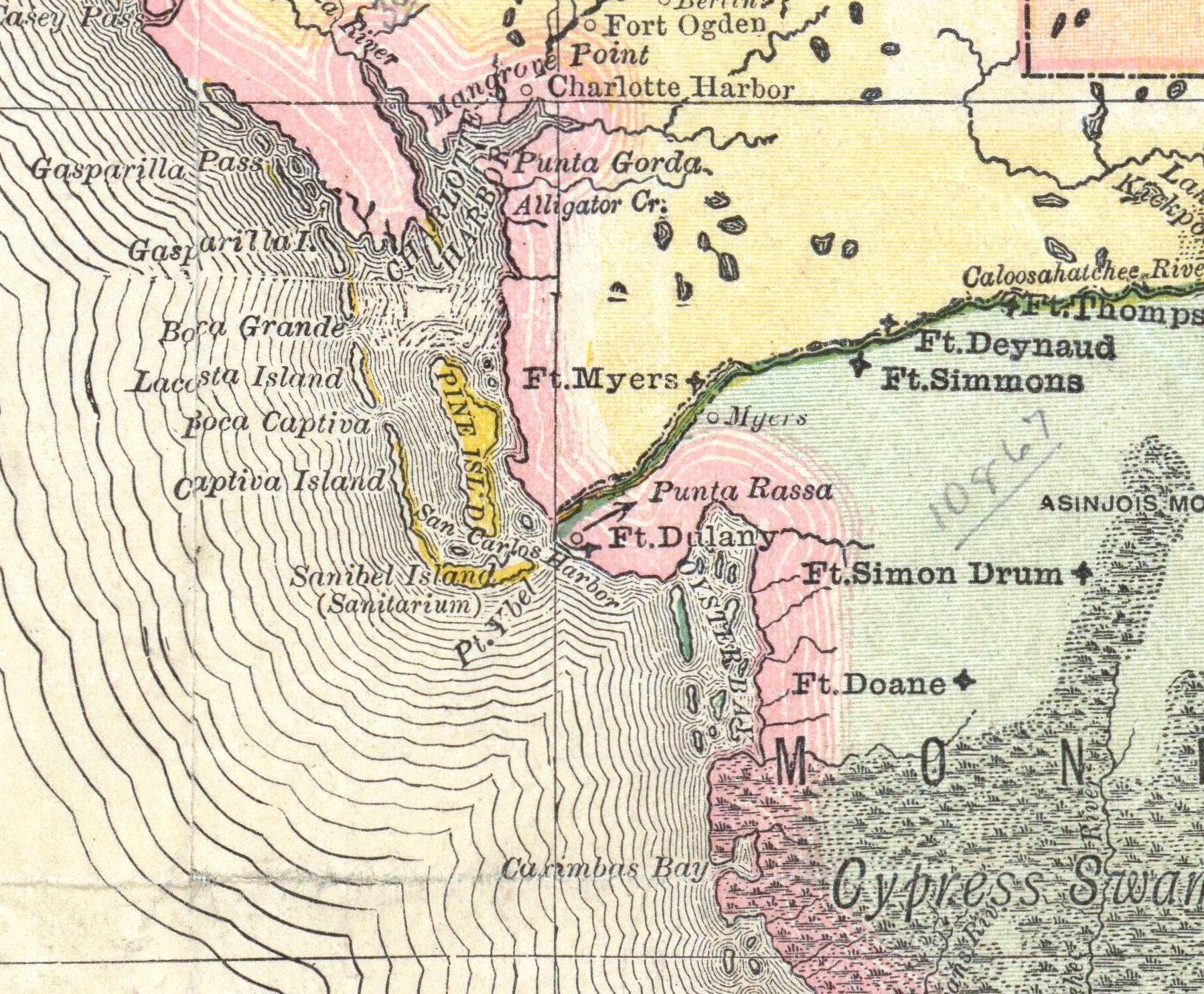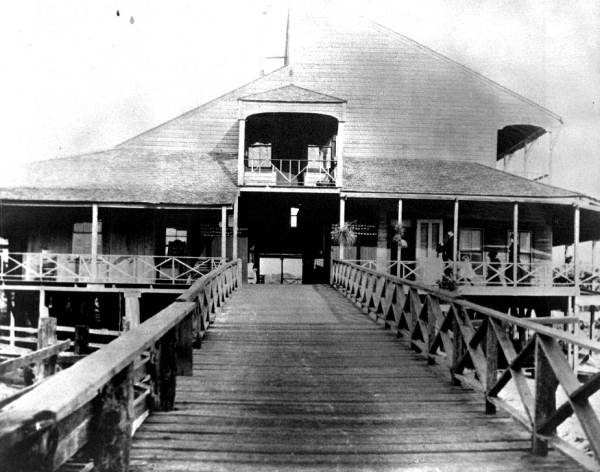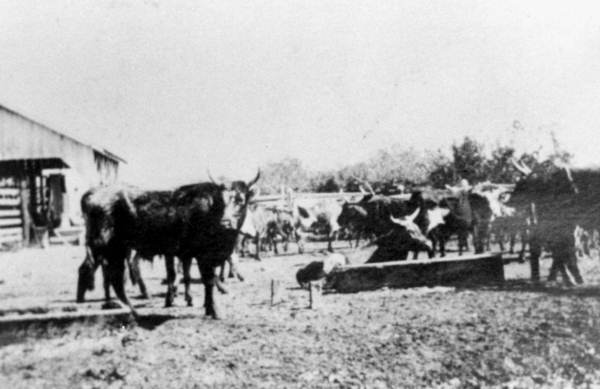Description of previous item
Description of next item
Old Punta Rassa
Published May 5, 2015 by Florida Memory
Passing through Punta Rassa on the way to or from Sanibel Island on Florida’s Gulf coast, you just don’t see many cows these days. It’s mostly condos, marinas, and businesses. That’s a big leap from how things used to be, as anyone familiar with the history of Florida’s cattle industry can tell you. For a good portion of the 19th century, Punta Rassa was a favored port for shipping cattle to Cuba.

Excerpt of an 1882 Rand McNally map of Florida showing Punta Rassa and Fort Dulany (Map Collection, State Library of Florida).
The port had already been an important spot for some time before Florida cattlemen began using it as a trading center. A U.S. Navy schooner reported in the 1820s that a group of Spaniards and Native Americans were using the area as a fishery. The U.S. Army established a supply depot (Fort Dulany) in the vicinity during the Second Seminole War. It wasn’t until the 1850s that the cattle shipping business began to really take hold.
One of Florida’s most famous cattlemen, Jacob Summerlin, helped establish Punta Rassa as a port. He and his brother Clarence came to the area in 1858 and began shipping cattle to Cuba. When the American Civil War struck shortly thereafter, the U.S. Army reactivated Fort Dulany and used the port to ship cattle down to Union-controlled Key West. Not long after the war ended, the port and Army barracks passed into the hands of the International Ocean and Telegraph Company, which extended an underwater telegraph cable from Punta Rassa to Havana, Cuba, 110 miles away.
Throughout this period, cattlemen from all over Central and South Florida would drive their cows to Punta Rassa to be sold. The telegraph company, the Summerlins, and later the Hendry family owned pens where cattle could be kept during price negotiations (for a fee, of course), and the port featured a number of places for the cattlemen to buy supplies, tools, and other goods not widely available in the interior of the state.
Punta Rassa could get a little wild when there were lots of cowhands about. The cattlemen were generally paid for their cows in gold coins, and the hands typically received their cut while still in town. Contemporaries recalled that some of this money often went toward having a good time drinking Cuban rum and playing poker. Longtime resident C.T. Tooke didn’t recall fights being all too common, but he did remember that the younger men liked to shoot when they got a bit “liquored up.” The walls and floors of the old barracks were riddled with bullet holes, he explained.

The barracks seen here were originally built by the United States Army during the Second Seminole War. Over time the building was expanded to accommodate a cable station and an increasing number of weary cattle drivers (circa 1890s).
Toward the end of the 19th century, Punta Rassa began to transform yet again. Florida’s cattle trade was still significant, but competition from Texas and Central America was taking its toll on demand. Meanwhile, another group had discovered Punta Rassa and the surrounding area: wealthy sport fishermen.
In 1885, New York sportsman W.H. Wood reputedly caught the first tarpon ever to be landed using a rod and reel. Chain lines and harpoons had previously been the favored methods for catching these large fish. As Wood’s catch became famous through sports pages across the country, sport fishermen began flocking to Punta Rassa to try their hand at fishing for tarpon, Spanish mackerel, and kingfish. The Summerlins, Shultzes, and other families that had previously catered mostly to Florida’s Cracker cattlemen, now turned their attention toward building inns and other amenities to serve these new customers.
The port’s good fortune began to wane in the early years of the 20th century. In 1906, the Tarpon House, one of the elite lodges for sport fishermen, was destroyed by fire. Some of the hotel’s regular guests chipped in and helped finance the rebuilding, but the new structure burned in 1913. It was never rebuilt. Punta Rassa never quite came back from these losses, at least as a major business center. These days, most folks know it to be nothing more than a quaint section of roadway linking Sanibel Island with the greater Fort Myers area.
For more on Punta Rassa and its ties to Florida’s cattle industry, we recommend these books:
Joe Akerman, Florida Cowman: A History of Florida Cattle Raising. 6th ed. Madison: Jimbob Printing, 1989.
Prudy Taylor Board, Remembering Lee County: Where Winter Spends the Summer. Charleston: History Press, 2006.
Cite This Article
Chicago Manual of Style
(17th Edition)Florida Memory. "Old Punta Rassa." Floridiana, 2015. https://www.floridamemory.com/items/show/295245.
MLA
(9th Edition)Florida Memory. "Old Punta Rassa." Floridiana, 2015, https://www.floridamemory.com/items/show/295245. Accessed February 26, 2025.
APA
(7th Edition)Florida Memory. (2015, May 5). Old Punta Rassa. Floridiana. Retrieved from https://www.floridamemory.com/items/show/295245

 Listen: The Assorted Selections Program
Listen: The Assorted Selections Program

